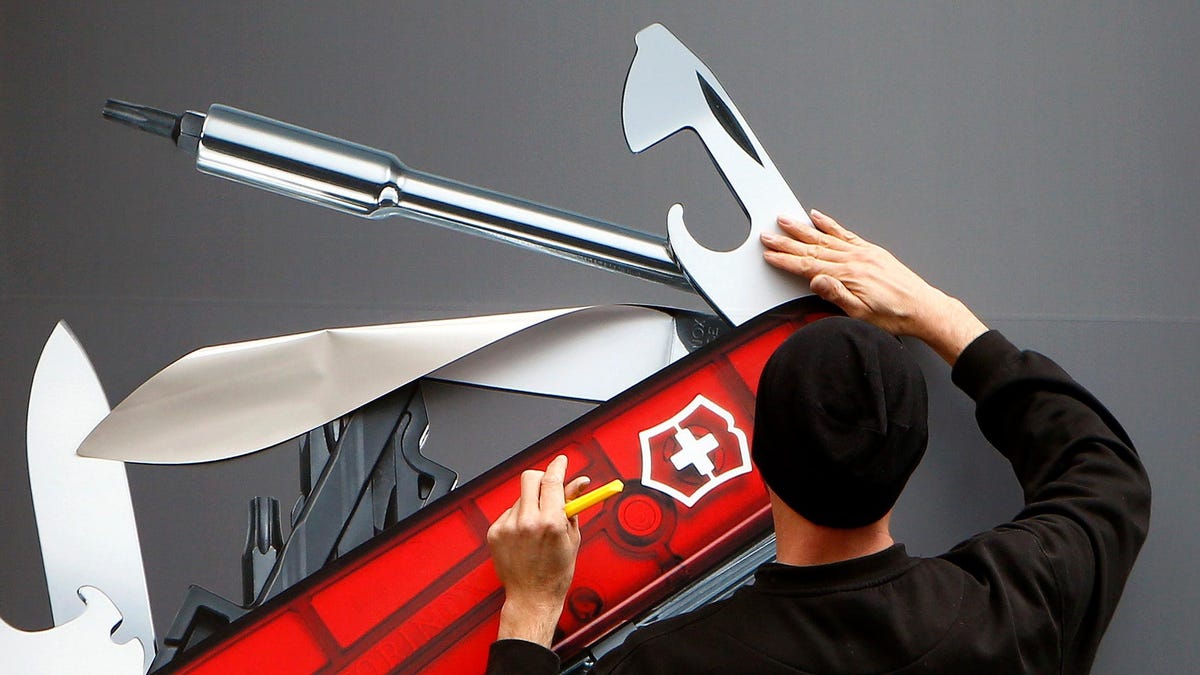The Swiss Army Knife has become such a shorthand for multifunctionality that companies producing does-a-lot-of-stuff wares will often say that their goods are the “Swiss Army Knife” of whatever category they’re a part of. You can use the tool to cut stuff, snip stuff, uncork stuff, file stuff, in some cases download stuff.
But Victorinox, the company behind the famous gadget, is working on a Swiss Army Knife without the knife part.
“We are in the early stages of developing pocket tools without blades,” a spokesperson for the company told CNN. Though it won’t be discontinuing its bladed version, the company has been trying to figure out how to serve customers in places — specifically England and some Asian countries — where knives aren’t as welcome. The British government, for example, is considering new legislation on carrying blades in public.
The Swiss Army Knife has its roots in 1880s Germany. Then the Swiss Karl Elsener took production over the border. Soon a competitor emerged in the company Wenger, and for a while the Swiss government split its orders for the tools between the two of them. Wenger called its version the “genuine” Swiss Army Knife, and Elsener’s Victorinox called its version the “original.” The two companies ended up merging in 2005.
Though 9/11 did a number on the company as pocket knives became much more scrutinized and policed in its aftermath, Victorinox and its knives have stuck around. The company made its 500 millionth Swiss Army Knife in 2017. Its most expensive edition, the $395 Swiss Champ XXL, has 73 features, including a fish scaler, tweezers, and a wood saw.
This article originally appeared on Quartz.

